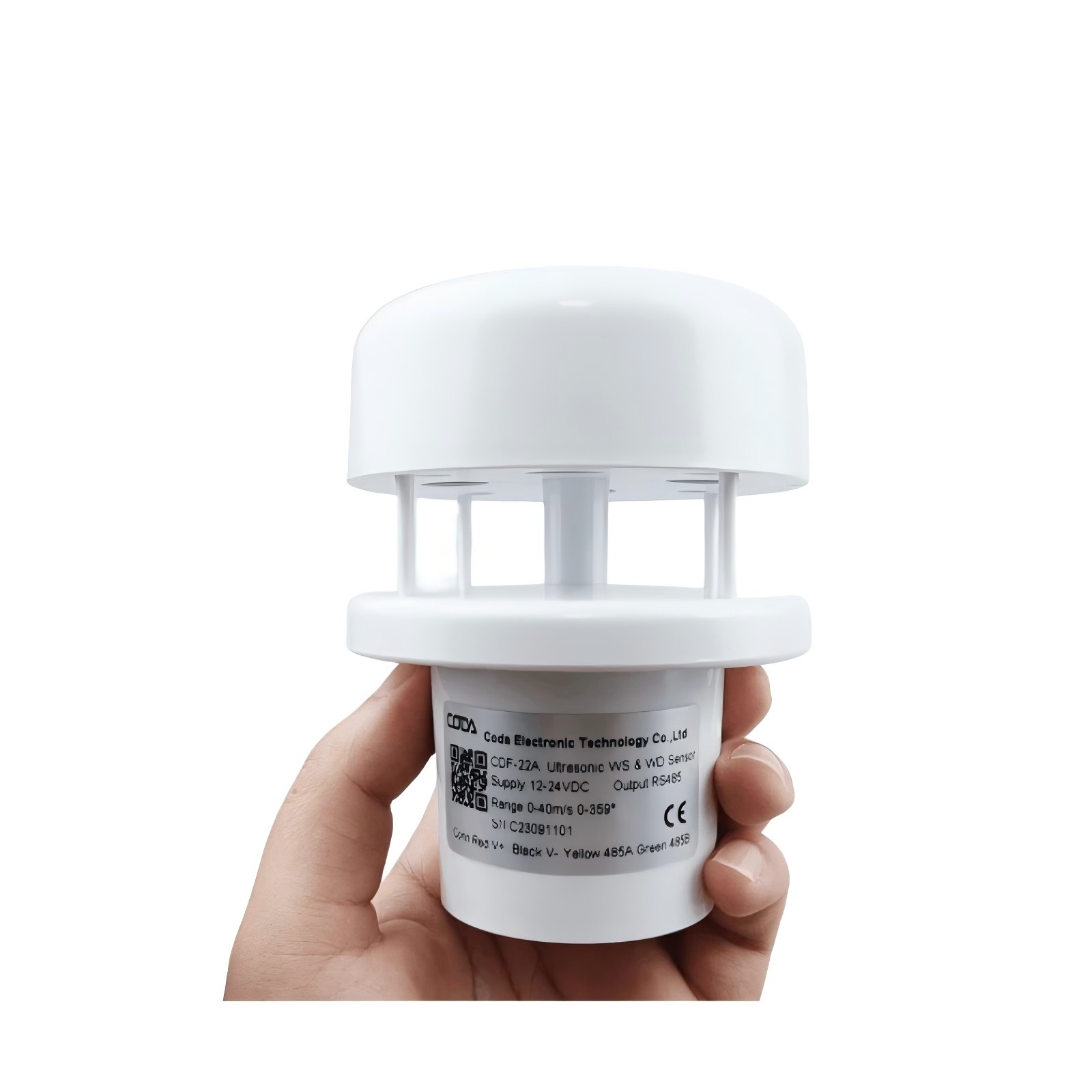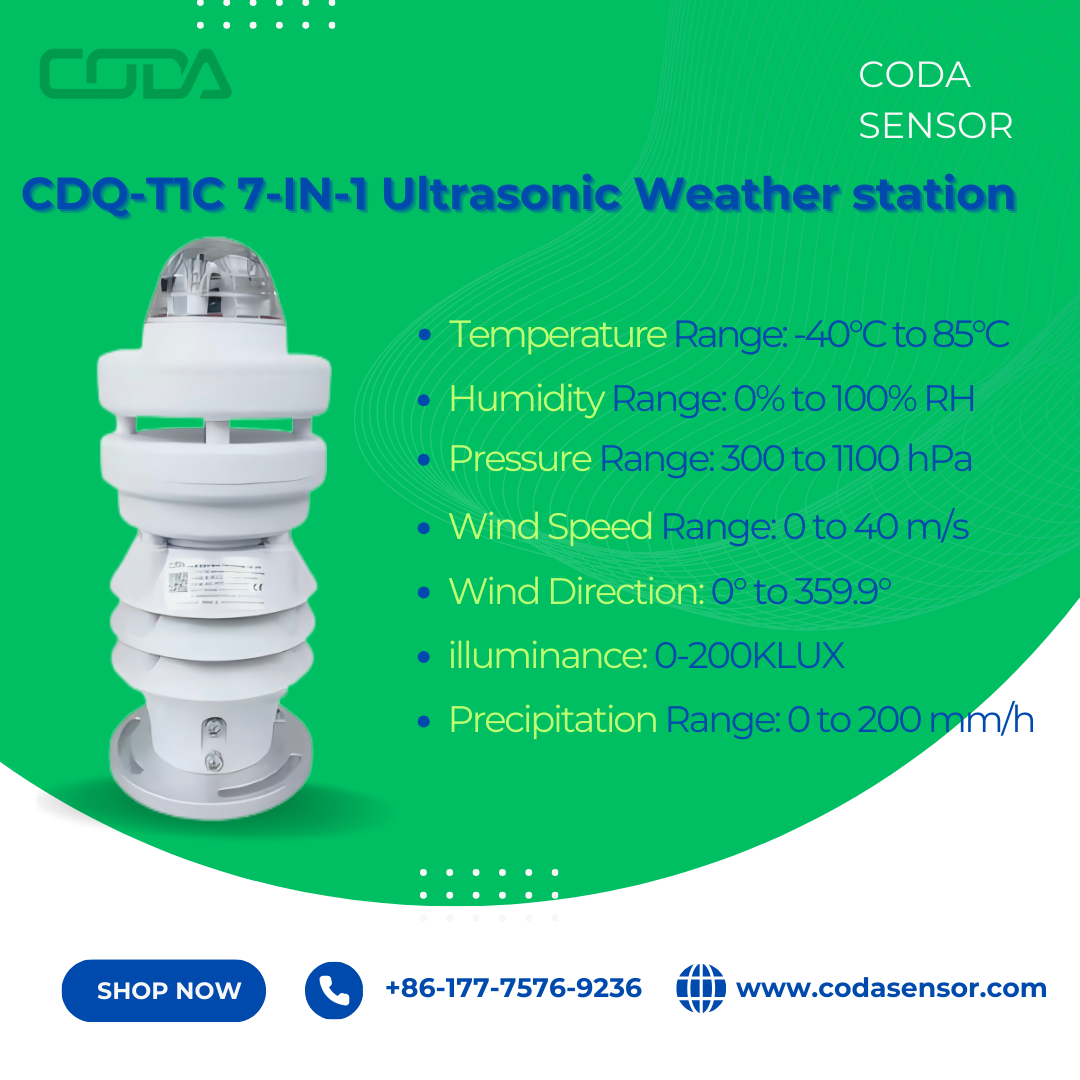In the ever-evolving field of environmental monitoring, precision and reliability are key. To achieve accurate measurements in weather stations, a variety of advanced technologies are used. Among these, optical rain gauges, ultrasonic anemometers, and ultrasonic weather stations are playing an increasingly important role.
These instruments offer numerous advantages over traditional methods, providing real-time, high-accuracy data for applications ranging from meteorology to agriculture, construction, and beyond. In this article, we will look at three new technologies. We will discuss their benefits and how they change how we collect and analyze weather data.
An optical rain gauge is a highly accurate and reliable device used for measuring rainfall intensity. Optical rain gauges are different from traditional tipping bucket rain gauges. They use light technology to detect raindrops as they pass through a sensing area.
These gauges typically employ a laser or infrared light beam, which is interrupted by falling raindrops. The interruption of the light signal is then used to determine the intensity and frequency of the rain.
High Accuracy and Sensitivity: Optical rain gauges can detect even the smallest raindrops. They provide accurate measurements of rainfall intensity, even in light showers.
No Moving Parts: Optical rain gauges use light sensing instead of mechanical parts. This means they have fewer moving parts. This reduces wear and tear. It leads to longer-lasting, maintenance-free use compared to traditional rain gauges like tipping buckets.
Wide Measurement Range: Optical rain gauges can measure many types of rainfall. They work well for light rain and heavy downpours. This makes them great for different climates and conditions.
Quick Response Time: These rain gauges give fast data on rainfall events. They offer real-time monitoring for uses that need quick weather information, like flood forecasting and environmental monitoring.
Applications:
Optical rain gauges are often used in weather stations and research settings. They are also important for farming. These gauges provide accurate rainfall data, which is vital for making decisions. Their ability to handle various precipitation rates makes them suitable for both urban and rural settings.

An ultrasonic anemometer is a sophisticated device used to measure wind speed and direction. Unlike traditional anemometers that have moving parts like cups or vanes, ultrasonic anemometers use sound waves. They measure how long it takes for the sound waves to travel between sensors. The wind affects the speed of these sound waves, allowing the instrument to calculate both the wind speed and direction.
No Moving Parts: Ultrasonic anemometers work without mechanical parts. This makes them more durable and less likely to break in bad weather, like high winds, ice, or snow. This also means they require minimal maintenance compared to traditional anemometers.
High Precision: These anemometers provide accurate measurements. They are perfect for tasks that need exact wind speed and direction data. This includes wind energy monitoring, aviation, and weather research.
Fast Response Time: Ultrasonic anemometers can quickly detect changes in wind. They provide real-time data that is important for places where wind conditions change fast, like coastal areas or mountains.
All-Weather Performance: Ultrasonic anemometers work well in all weather. They perform in extreme temperatures, high winds, and rain. They do not suffer from the usual wear and tear of moving parts.
Applications:
Ultrasonic anemometers are widely used in meteorological stations, wind farms, aviation, and climate research. Their ability to give quick and accurate wind measurements in different weather makes them perfect for tough applications.

An ultrasonic weather station is a complete weather monitoring system. It uses several sensors, such as an ultrasonic anemometer, an optical rain gauge, temperature sensors, humidity sensors, and barometers. These stations use ultrasonic technology to provide real-time, high-accuracy measurements for a variety of environmental parameters.
Comprehensive Data Collection: Ultrasonic weather stations provide a complete suite of environmental data, including wind speed and direction, rainfall, temperature, humidity, pressure, and more. This all-in-one functionality is essential for a wide range of applications, from weather forecasting to climate research.
High Accuracy and Reliability: These stations use ultrasonic anemometers and optical rain gauges with other weather sensors. This setup gives very accurate and reliable data. This data is important for disaster preparedness, agriculture, and renewable energy.
Minimal Maintenance: Ultrasonic weather stations have no moving parts in their sensors. This means they need less maintenance than traditional weather stations. This reduces downtime and maintenance costs, making them ideal for remote or hard-to-reach locations.
Real-Time Monitoring and Remote Access: Ultrasonic weather stations offer real-time data transmission, allowing for continuous monitoring. Many modern systems let users access weather data from anywhere using the internet.
Compact and Weather-Resistant: These weather stations are made to be small and weather-resistant. This makes them good for outdoor use in all kinds of places, even tough or remote areas.
Applications:
Ultrasonic weather stations are used in many industries. These include agriculture for crop management, renewable energy for wind farm monitoring, aviation, construction, and environmental research. They are particularly useful in areas where real-time environmental data is critical for safety, efficiency, and decision-making.
The advent of optical rain gauges, ultrasonic anemometers, and ultrasonic weather stations represents a significant leap forward in meteorological monitoring. These advanced tools provide great precision, reliability, and easy maintenance.
They give important data for many uses. You can manage a wind farm, do climate research, or track rainfall for farming. These technologies give you real-time and accurate data. This data is essential for making informed decisions.
By adopting these innovative instruments, industries can enhance their ability to monitor and respond to environmental changes, improving both safety and operational efficiency. The future of weather monitoring is here. It brings many advanced tools that change how we understand and respond to the weather.
Learn how CODA Sensor solar radiation and PAR se
Discover how real-time weather station data impr
Discover how Automatic Weather Stations (AWS) ar
Contact: Molly
Phone: +86-17775769236
Tel: 86-0731-85117089
Email: molly@codasensor.com
Add: Building S5, Aux Square, Yuelu District, Changsha City, Hunan Province, China
We chat